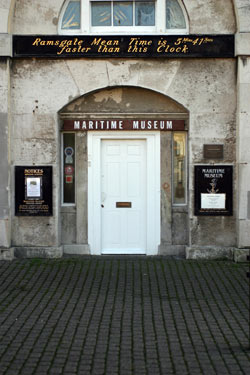Sigma 50mm f/2.8 DG Macro EX
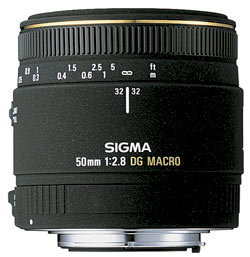 Specifications
Specifications
- Focal Length 50mm
- Max Aperture f/2.8
- Min Aperture f/45-f/32
- Angle of view 46.8
- Elements/groups 10/9
- Min Focus 189mm (1:1)
- Filter size 55mm (72mm with hood)
- Size 71.4x66.5mm
- Weight 0.320kg
- Mount available Sigma, Canon, Minolta (f/45) Nikon, Pentax (f/32)
- Price (RRP) 229.99
Build and handling
This lens is one of Sigmas EX range, built to withstand much tougher handling than the average and it achieves this well. The matt finish of the range sits well on this simple, uncomplicated lens. On the left, as the lens sits on the camera, is a standard AF/MF switch and forward of this is a focus-limiting switch. This works either side of the 0.25m mark to improve AF times or can be switched off to enable the full focus range. Macro lenses are notoriously slow to autofocus, and this one is no different.
Manual focus, which is the normal way to do this kind of work, is achieved with the ring mounted at the front of the barrel. The ring is marked with a distance scale in both metres and feet and is nicely torqued when in manual focus mode. Once autofocus is engaged, this ring becomes stiff and should not be manually over-ridden. At its closest focus, which gives a 1:1 ratio of subject on the sensor/film, the front element extends some 36mm, leaving just some 50mm odd between the front of the lens and the subject.
The lens is supplied with a metal, 55mm screw-in hood that carries a secondary filter thread of 72mm at its front end giving the choice of filter size. Although this extends with the focus, it does not rotate, making the use of polarizers that much easier.
Optical Quality
The parameters that affect a lenss quality are manifold but the one that has the most significance visually is that of contrast. The contrast on this lens is excellent. Contrast however, is no good without resolution and again, this lens reaches very high standards. It needs closing down by a stop to reach its better figures but even wide open it is a decent performer. Used on a cropped sensor camera, the edge performance was every bit as good as the centre and bodes well for it if used on a full frame digital or 35mm film camera which it is designed to do.
istortion is in the realms of invisible to the eye, with a figure of 0.14% measured, indicating the tiniest amount of pincushion, but a figure that low really is negligible. Chromatic aberration is not detected anywhere across the frame or throughout the aperture range so corrections are good, as they should be for a prime lens and the DG coating on the rear element eliminates any light bouncing around the mirror box.

| The excellent contrast of this lens can be seen even when shooting through glass. This exposure was 2.5sec at f/16 and ISO100 on the Canon 300D. |
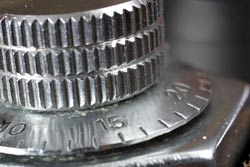 At a 1:1 ratio, there is the ability to get a much better depth-of-field than on the 50mms longer cousins. 3.2sec at f/11 and ISO400. Canon 300D | 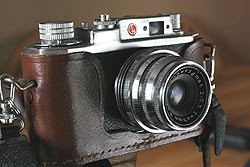 With a focal length of 50mm on a cropped sensor camera, the lens gives a nice perspective while retaining the qualities of a standard lens on full frame cameras. 0.5sec at f/10 and ISO200 on a Canon 300D |
Click on each comparision photo below to view full size versions
Below is our lens test data. To find out how to use these graphs look at this article: How we test lenses
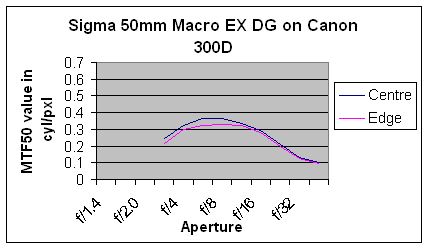
Verdict
There really isnt a lot wrong with this lens as it is well built and optically performs to a very high standard. It maintains Sigmas deserved reputation for producing high quality Macro lenses admirably. My only complaint would be with the extending front element along with the short distance required for 1:1 photography but if that is a problem for you, then go for the just as good 105mm version. With the 50mm angle of view of 46.8, it does give some chance of getting a depth-of-field.
Overall, this is an excellent lens that, on a cropped sensor, also doubles up as a decent length for portrait work.
In summary, the positive points of the Sigma 50mm f/2.8 EX DG Macro are:
![]() Excellent optical quality in all areas
Excellent optical quality in all areas
![]() Good build quality and finish
Good build quality and finish
![]() Reasonable price
Reasonable price
![]() Metal hood gives choice of filter size
Metal hood gives choice of filter size
The negative points are:
![]() Extending front element.
Extending front element.
![]() Slow autofocus
Slow autofocus
![]() No soft case as with other EX lenses
No soft case as with other EX lenses
Check the latest price of the Sigma 50mm f/2.8 EX DG Macro here
Test by Ian Andrews www.wildaboutkent.co.uk
I have shot extensively in the past with a Nikkor 55mm Macro on my F3 nikon, and was looking for the same quality, but knew I couldn't get it at this price.
Was I pleasantly surprised. Edge to edge sharpness and contrast beat anything I've ever shot with before, save for the lenses from my old Mamiya C-330.
The one thing folks need to beware of is bad Bokeh. For out of focus elements in the far background, the bokeh takes on some wierd and often distracting shapes.
Also, the f/45 is so soft as to be almost useless, but f/32 and up are great.
Add your message
Please login here or if you've not registered, you can register here. Registering is safe, quick and free.
photodo Stats
428 MTF tests
74 in-depth photodo reviews
100+ users join each day
Help the lens community by reviewing or rating a lens today via our lens search
Latest Lens Reviews
- Chinon 28mm f/2.8 Vintage Lens Review
- Canon EF 70-200mm f/4L IS II USM Lens Review
- Samyang AF 85mm f/1.4 EF Review
- Sigma 70mm f/2.8 DG Macro Art Review
- Samyang AF 24mm f/2.8 FE Review
- Meike 50mm f/1.7 Review
- Tamron 70-210mm f/4 Di VC USD Review
- Lensbaby Burnside 35mm f/2.8 Review
- Asahi Super Takumar 50mm f/1.4 Review
- Asahi Super-Multi-Coated Takumar 135mm f/3.5 Review

